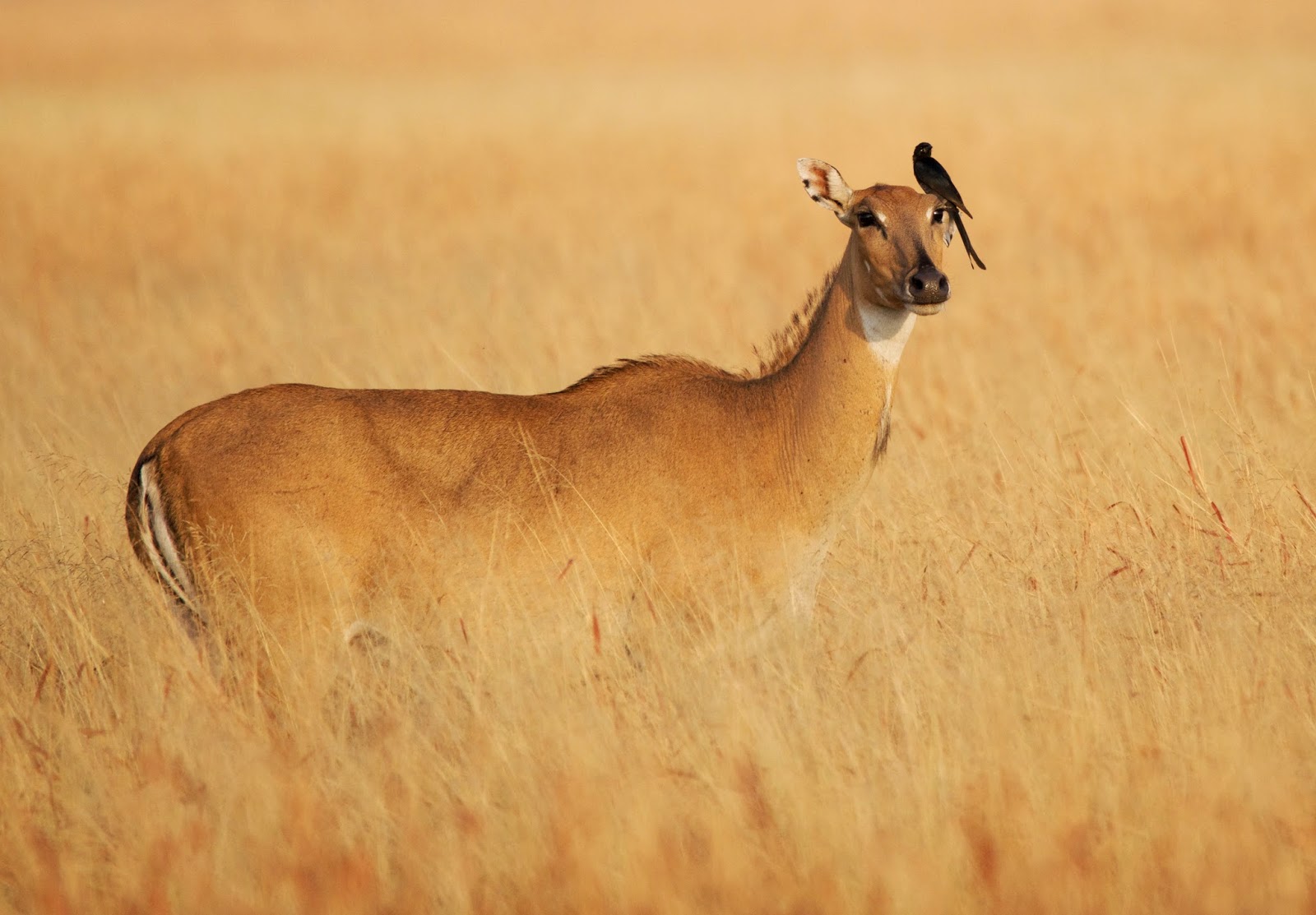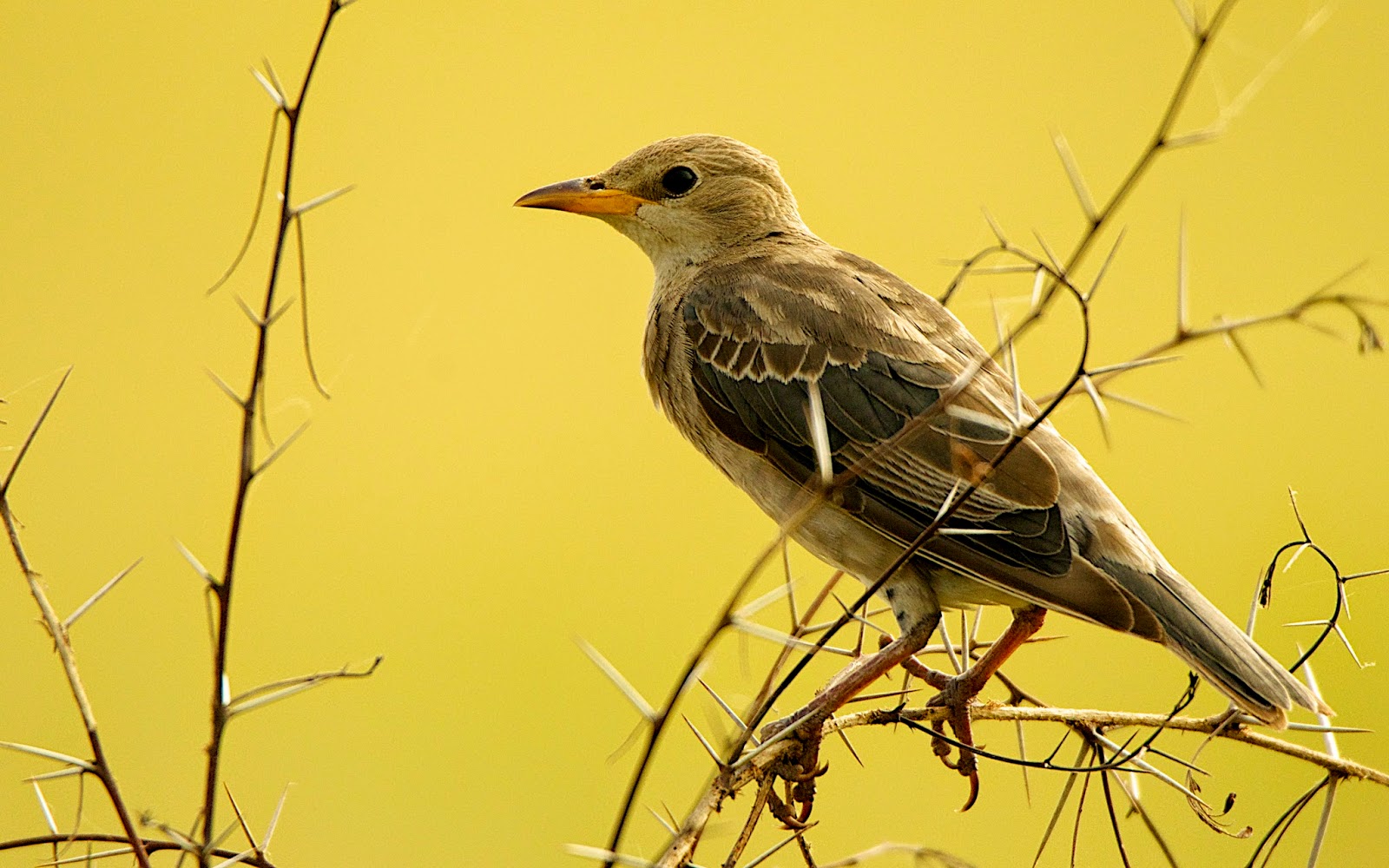Gujarat Sanctuaries and Velavadar
Gujarat is a unique state that has many kinds of habitats. These varied landforms include dry deciduous forests, majestic grasslands, wetlands, marine ecosystems and rich moist deciduous forests. These habitats are home to some extremely rare wildlife. The Asiatic Lion is found only in Gir. The Wild Ass in the Rann of Kutch, the rare great Indian bustard in the bird reserves, the world's only four-horned antelope and the Black Buck are some other valued species protected in Gujarat. Black bucks are found in a small part of Bhal region, south of Ahmedabad, and covering an area of 34.52 sq.km, which was declared as Blackbuck National Park in July 1976, This sanctuary which is an open grassland has been declared primarily for Blackbucks. The beauty of the grassland is enhanced by the movements of blackbucks and nilgais, which one can see from long distances. The blackbuck is most conspicuous for its jumping over the levels of grass. The grassland lies between two rivers namely Parvalia and Alang, which drain into the Gulf of Cambay. During the monsoon the area is often flooded. The blackbuck herds are mostly to be found in the northern part of the sanctuary, while the southern part has patches of thorn forest providing excellent opportunities for bird watching (specially birds of prey). The Alang river forms the southern border of the Park and is the favorite retreat for wolves. The park can be toured by vehicle and also on foot. (For further details please see www.gujaratforest.org/black_buck1.htm)
Our Velavadar Visit
On the 19th of October, 2014, Saturday as our afternoon was free (a meeting having been rescheduled) me and my wife Meena started for the much heralded Velavadar Black buck sanctuary. Actually the suggestion about Velavadar came during the weekly officers' luncheon meeting from Vipul Mittra, who was till recently handling the tourism portfolio in the Gujarat state. He advised us to make a one day trip to Velavadar and stay at the Blackbuck Lodge about which he was sure we would enjoy. We followed his advice and arrived at the Lodge after a two and a half hour drive from Gandhinagar, Gujarat. It is always advisable to be very sure of the directions, but here me and my driver both assumed that we know the direction en route to Bhavnagar. So at several places we had to ask for the exact directions and that added to the anxiety of our reaching there before sunset. In any case, for the uninitiated, it is on Ahmedabad- Bhavnagar route, about 25 km ahead of the Dholera Special Investment Region. One has to take a right turn from the Adhelai village crossing and after about a 5 km drive one reaches the Sanctuary and just at the end of sanctuary limits, there is the Blackbuck Lodge. As the sun was to set soon, we just dumped our few pieces of luggage in our tastefully decorated room and went to the Sanctuary armed with the cameras. And what a delight it was.......
Of course what we saw first were the Blackbucks and hundreds of them in droves. Ever since Gujarat government declared this relatively small area as sanctuary in 1976, blackbucks have really got a reprieve of life. In this sanctuary they are not afraid of vehicular movement or some human beings , but surely walking is not encouraged here as hyenas and wolves also co-exist. We found a golden yellow grass,almost like the Savannah of Latin America, and the evening glowing sun produced a magical , almost ethereal colors. As the grass was almost 3-4 ft in height, it provided some sort of natural cover to the black-bucks. Initially we thought that this grassland was a big hindrance to photography, but soon realized that this produced a magical feel to the place. All in all, a photographer's delight...
Our camera was Nikon D800 along with Tamron 150-600mm lens. So far I have found this lens to be highly satisfactory and have not suffered from the absence of prime lens. We had not taken any tripod and realized soon enough that it was a mistake. Even for stationary birds for example the shots of Rollers or the owlet, I had to go for very high ISO which surely affected the quality of the shots. Of course the harriers were quite frisky and those shots had to be hand held compulsorily. I have utilized Aperture for post processing, but as Apple has stopped further development in this software, I will have to migrate to Lightroom or photoshop. Oh, another learning curve...
The following shot of the blackbucks has been highly appreciated on my Flickr account.
The blackbucks are not reluctant to head- butting and it is reported that they often they lose their antlers in the process. This is also related to winning the rights over the females. Of the various shots I took of this head-butting I found the one below most appealing as both the bucks were symmetrical in fighting , with their legs and necks forming a M or a V in the process.
Two lovely specimen of blackbucks.
The next day morning we found an excellent shot of a young female buck in flight.

The other mammals found there include hyena and wolves, but as these animals are relatively short statured, we could not see them in the tall grass. What really amazed us was the large presence of the blue bulls or what is called nilgai in India. Lovely proud animals and again in the golden light provided another great photo op. The shot below is the morning shot of the female nilgai with a dronga on her left ear.
 Birds in Velavadar
Birds in Velavadar
Velavadar has now become a birder's delight and is firmly placed in the Bird tourism of Gujarat. The species we were able to see over a period of two outings- an evening and a morning, were really substantial. There were so many varieties and species of birds and the guide was extremely anxious to show them to us. In fact at least 91 varieties of common birds are supposed to be found here. ( for a full listing see the website of Blackbuck Lodge). The guides kept on emphasizing that Velavadar is the largest area in the whole world for the roosting of harriers. (A harrier is any of the several species of diurnal hawks forming the Circinae sub-family of the Accipitridae family of birds of prey). Due to our limited knowledge then, we were not able to distinguish between the various types of harriers but after returning to Gandhinagar, we once again went through our Salim Ali books, and promised to ourselves that in the next visit we will not miss even a single bird sighting. By the next time I would also be in a position to take camera shots of Birds in Flight, which surely requires great technical skills , as I realized this time.
The cranes in various poses


Eurasian Roller : European roller (Coracias garrulus) is a long-distance migrant bird from warm, dry, open country with scattered trees, preferring lowland open countryside with patches of oak Quercus forest, mature pine Pinus woodland with heathery clearings, orchards, mixed farmland, river valleys, and plains with scattered thorny or leafy trees. It winters primarily in dry wooded savanna and bushy plains, where it typically nests in tree holes.

The Indian Roller (Coracias benghalensis) is a member of the roller family of birds. They are found widely across tropical Asia stretching from Iraq eastward across the Indian Subcontinent to Indochina and are best known for the aerobatic displays of the male during the breeding season. They are very commonly seen perched along roadside trees and wires and are commonly seen in open grassland and scrub forest habitats.
Another harrier ( probably the Montagu harrier)nroosting on the road. A very interesting feature was the large number of these harriers on the road especially in the evening - surely we had never seen so many of them at one place. Velavadar justifiably claims to be the world’s largest communal harrier roosting site.



Montagu harrier (Circus pygargus) is a migratory bird of prey of the harrier family. This species can be found in a middle-latitude band of predominantly temperate climates, but also in Mediterranean, and boreal zones. Although it has been found nesting up to 1,500 m (4,900 ft), it is essentially a lowland species, and nests mostly in broad river valleys, plains, and levels bordering lakes and the sea. It can breed in wetlands, though these are often smaller and dryer than those used by the marsh harrier. It also utilizes heaths, dunes, moors, and can be found in the steppe. It adapts to shrub lands in gorse or heather and to areas planted with young conifers.
Kestrel in flight.
One of the various bird species, a Juvenile Rosy starling, one of the common residents of the Indian sub-continent. But to the untrained eyes and ears, quite a learning.
A spotted owlet which we were able to see near a building abandoned after the 2001 earthquake. The spotted owlet (Athene brama) is a small owl which breeds in tropical Asia from India to Southeast Asia. A common resident of open habitats including farmland and human habitation, it has adapted to living in cities. They roost in small groups in the hollows of trees or in cavities in rocks or buildings. It nests in a hole in a tree or building, laying 3–5 eggs.The spotted owlet is small (21 cm) and stocky.
A female collared bush chat.
We have taken so many excellent shots of this variety of white throated kingfisher that we were somewhat disappointed by this long distance shot. This was found on the opposite side of the road perched on a tree near the waterbody.
This grand egret was almost like the symbol of the Black Buck Lodge, around the man made pond near the Reception of the Lodge. The egret was very peaceful with its surroundings, quite unconcerned with the all the happenings around it.
The Blackbuck Lodge
For stay at Velavadar, there is no better option than this highly rated and recommended Lodge. Though named a Lodge, it has got all modern technologies available, including a full fledged wi-fi in the rooms and lavish, if not extravagant, lunch and dinner, with both Continental and local Indian cuisine. As the very involved owner Mickey Desai informed us, he has been able to lure a chef from the Luxury Cruise liner. No wonder, we had excellent risotto, pumpkin soup and a chicken roast - all fresh from the nearby local organic farms. Mickey has also been able to provide employment to over 30 local youth, now they are an epitome of manners and courtesy. A job well done, Mickey. There is also a forest guest house within the sanctuary area and that is also rated quite well. However, as even the Lodge is just 5 minutes away from the Sanctuary, distance should not be a criterion in deciding where to stay. In any case night stay is a requirement for any serious photographer or wild life lover, as one must see the wild life at least during early morning around 630 hours when the Sanctuary opens and then again in the afternoon.
For my overall photostream please see on Flickr https://www.flickr.com/photos/39456218@N00/










